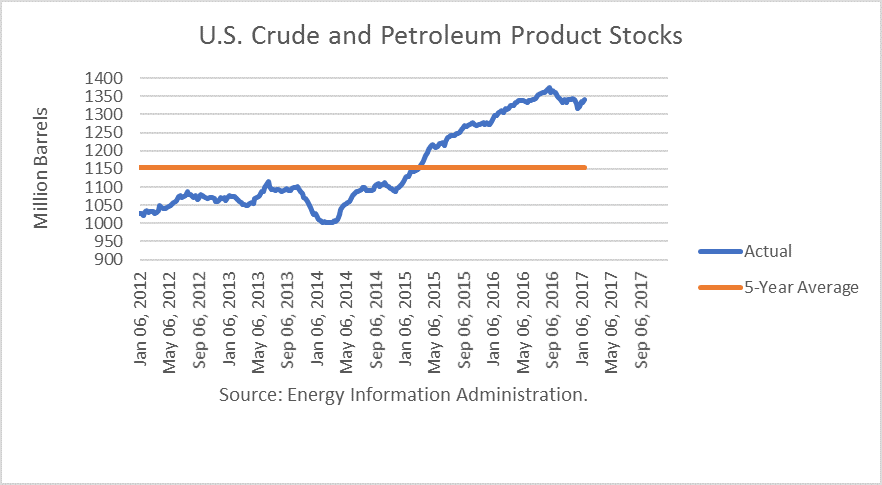
U.S. oil inventories have increased by 20 million barrels since OPEC’s cut went into effect. Preliminary estimates of imports from OPEC members reveal an increase in the four-week trend of 77,000 b/d thus far in January from end-December. The largest increase, 148,000 b/d, was from Saudi Arabia.

I also observed that Saudi Arabia and Russia have masqueraded seasonal declines as their cuts. The Saudi cut of 486,000 b/d is a typical decline from production in the summer, when its domestic demand peaks. This year, instead of reducing its production after the summer, as it normally does, it waited until the OPEC meeting. (The graph below shows the seasonal decline in production from summer peak to the autumn in each year.) Continue reading "Why U.S. Crude Imports Might Not Drop Despite OPEC's Cuts"
